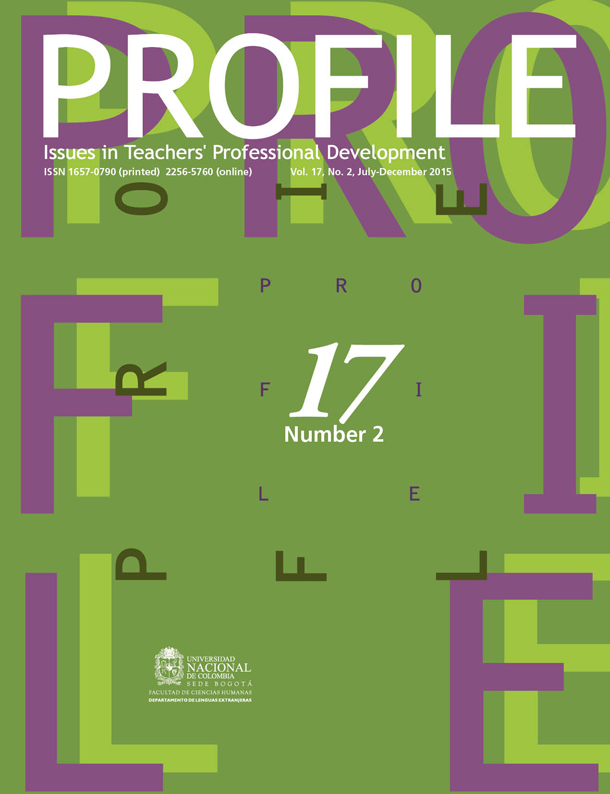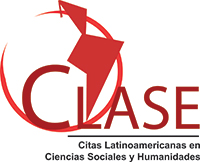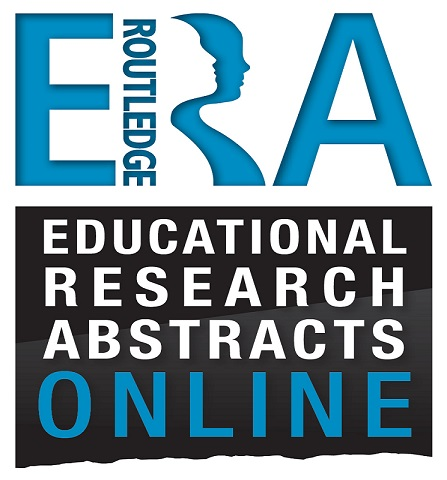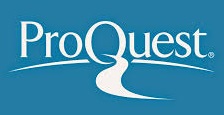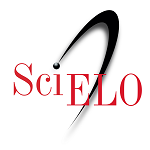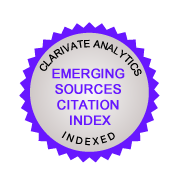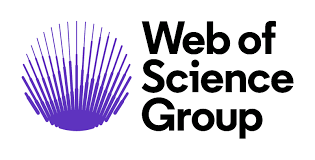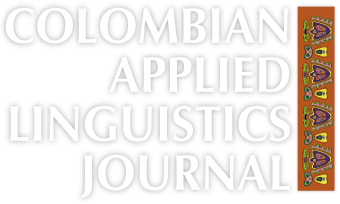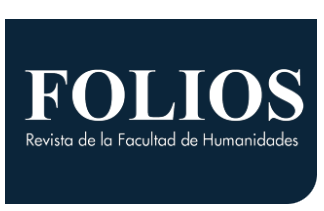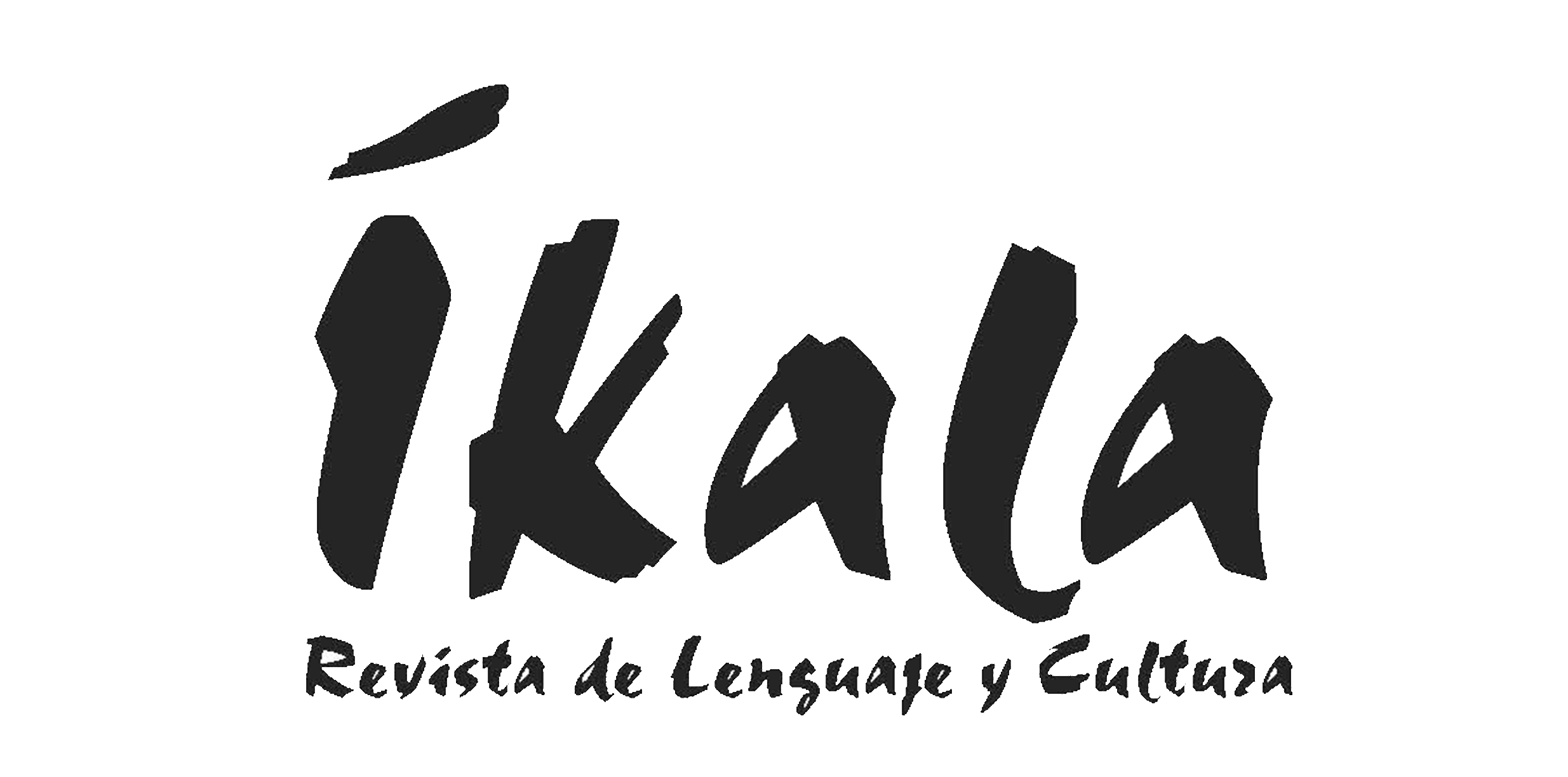Global Professional Identity in Deterretorialized Spaces: A Case Study of a Critical Dialogue Between Expert and Novice Nonnative English Speaker Teachers
Identidad profesional global en espacios desterritorializados: un estudio de caso de los diálogos críticos entre profesores de inglés no nativos
DOI:
https://doi.org/10.15446/profile.v17n2.44194Keywords:
Critical pedagogy, expert/novice teachers, global professional identity, nonnative English speaker teacher (en)Identidad profesional global, pedagogía crítica, profesores expertos/novatos, profesores de inglés no nativos (es)
This study analyzes the online, peer-peer dialogue between two groups of nonnative English-speaking teachers who are attending graduate programs in Colombia and the United States. Framed by the theoretical concepts of critical pedagogy and global professional identity, a qualitative analysis of the data shows that their expert vs. novice roles played a significant part in shaping their positions on the four themes that they discussed: the role of English language teaching in the global world, institutional constraints on teachers, whose culture to teach, and linguistic diversity in the classroom. This study highlights the responsibility of teacher education programs to cultivate healthy nonnative English speaker teachers’ professional identities given the global complexities that continue to unfold around these teachers.
En este estudio se analiza el diálogo en línea entre profesores de inglés no nativos, estudiantes de maestría en Colombia y Estados Unidos. El estudio se sustentó en pedagogía crítica e identidad profesional global. El análisis de los datos muestra que los roles experto/novato jugaron un papel relevante en las posiciones que los participantes asumieron con relación a cuatro temas: el papel de la enseñanza del inglés en el mundo global, las limitaciones institucionales sobre los docentes, qué cultura enseñar, y la diversidad lingüística en el salón. Este estudio señala la responsabilidad de los programas de formación docente en promover un desarrollo saludable de la identidad profesional de los profesores no hablantes nativos, dadas las complejidades globales a las que se enfrentan.
https://doi.org/10.15446/profile.v17n2.44194
Global Professional Identity in Deterretorialized Spaces: A Case Study of a Critical Dialogue Between Expert and Novice Nonnative English Speaker Teachers
Identidad profesional global en espacios desterritorializados: un estudio de caso de los diálogos críticos entre profesores de inglés no nativos
Carmen Helena Guerrero Nieto*
Universidad Distrital Francisco José de Caldas, Bogotá, Colombia
Bryan Meadows**
Fairleigh Dickinson University, Teaneck, USA
*helena.guerrero.ud@gmail.com
**meadowsb@fdu.edu
This article was received on June 28, 2014, and accepted on March 14, 2015.
How to cite this article (APA 6th ed.):
Guerrero Nieto, C. H., & Meadows, B. (2015). Global professional identity in deterretorialized spaces: A case study of a critical dialogue between expert and novice nonnative English speaker teachers. PROFILE Issues in Teachers’ Professional Development, 17(2), 13-27. https://doi.org/10.15446/profile.v17n2.44194.
This is an Open Access article distributed under the terms of the Creative Commons license Attribution-NonCommercial-NoDerivatives 4.0 International License. Consultation is possible at http://creativecommons.org/licenses/by-nc-nd/4.0/.
This study analyzes the online, peer-peer dialogue between two groups of nonnative English-speaking teachers who are attending graduate programs in Colombia and the United States. Framed by the theoretical concepts of critical pedagogy and global professional identity, a qualitative analysis of the data shows that their expert vs. novice roles played a significant part in shaping their positions on the four themes that they discussed: the role of English language teaching in the global world, institutional constraints on teachers, whose culture to teach, and linguistic diversity in the classroom. This study highlights the responsibility of teacher education programs to cultivate healthy nonnative English speaker teachers’ professional identities given the global complexities that continue to unfold around these teachers.
Key words: Critical pedagogy, expert/novice teachers, global professional identity, nonnative English speaker teacher.
En este estudio se analiza el diálogo en línea entre profesores de inglés no nativos, estudiantes de maestría en Colombia y Estados Unidos. El estudio se sustentó en pedagogía crítica e identidad profesional global. El análisis de los datos muestra que los roles experto/novato jugaron un papel relevante en las posiciones que los participantes asumieron con relación a cuatro temas: el papel de la enseñanza del inglés en el mundo global, las limitaciones institucionales sobre los docentes, qué cultura enseñar, y la diversidad lingüística en el salón. Este estudio señala la responsabilidad de los programas de formación docente en promover un desarrollo saludable de la identidad profesional de los profesores no hablantes nativos, dadas las complejidades globales a las que se enfrentan.
Palabras clave: identidad profesional global, pedagogía crítica, profesores expertos/novatos, profesores de inglés no nativos.
Introduction
The field of English language teaching (ELT) is recognized as a global phenomenon. In many ways, globalization has exposed contradictions and opened the door to ELT professionals being able to challenge the conventional boundaries of authority and legitimacy in terms of both what content to teach and who will teach it (Kachru, 1986, 1991). For example, ELT scholarship in the critical tradition (Phillipson, 1992) has illustrated the historical legacy of colonialism, which marginalizes nonnative English speaker teachers (NNESTs) for not meeting the British Australian North American (BANA) cultural and linguistic profile. The global spread of ELT now means that the majority of English teachers worldwide are NNESTs (Canagarajah, 1999; Seidlhofer, 2005). However, it is still common for NNEST job applicants to be scrutinized for their place of origin and skin color rather than their linguistic expertise and pedagogical training (Braine, 2010; Mahboob, 2010; Rudolph, 2013). As fundamental constructs such as legitimacy and authority are being challenged and redefined from multiple vantage points within the profession and across the globe, university teacher education programs have an important duty to develop NNESTs who can navigate these professional debates with agency and legitimacy.
Our stance is that teacher education programs that serve NNESTs should be informed by critical pedagogy such that NNESTs may resist the colonial legacy of ELT, which could work against them professionally. In this paper, we report on a pedagogical intervention that brought together in dialogue NNESTs who were attending graduate programs in teacher education in Colombia and in the United States. The two sets of students were connected using an online education platform and exchanged commentary on readings in critical pedagogy; we view dialogue as a key to unlocking subconscious pedagogical knowledge. Our research question was the following: How do graduate students’ dialogues provide them with spaces to activate critical awareness of their global professional identity?
Conceptual Background
Global Professional Identity
The complex interconnections that are characteristic of globalization today present important challenges for second-language teacher education (SLTE) (Kumaravadivelu, 2012; Lauder, Brown, Dillabough, & Halsey, 2006; Warschauer, 2000). The range of contexts in which teacher candidates may enter is diverse. SLTE has expanded beyond a training orientation to a broader charge that includes the cognitive dimensions of teacher practice and teachers’ professional identities (Richards, 2008). Following Ur (2002), we recognize teachers as committed to the profession, connected to the ELT community, principle-driven, and autonomous. The ELT field today requires a professional identity that is also globally minded, that is, aware that any teaching context is situated at both global and local scales simultaneously (Kanno & Stuart, 2011; Varghese, 2011). We refer to this as a global professional identity. This notion of global professional identity requires that teacher preparation programs address the dual scales of global and local to help teacher candidates “to make sense of various tensions and challenges” (Varghese 2011, p. 20) they encounter in the profession that could disadvantage them professionally (Hawkins & Norton, 2009; Kumaravadivelu, 2012; Pennycook, 2004).
Nonnative English Speaker Teachers (NNESTs)
Historically, the labels native speaker (NS) and nonnative speaker (NNS) have demarcated lines of professional legitimacy within the ELT field. Critical scrutiny of the privilege of the NS label took shape in the 1990s and continues to the present (Braine, 2010; Holliday, 2006; Kabel, 2009; Liu, 1999; Mahboob, 2010; McKay, 2003; Samimy, 2008). This body of research encourages ELT professionals to recognize that (a) the NS/NNS labels are social constructions rather than inherent personal attributes, (b) BANA cultural and linguistic varieties may not always be the appropriate models for students, and (c) effective language teaching requires both linguistic and pedagogical expertise and NSs and NNSs must demonstrate both in hiring situations (Mahboob, 2010). This line of critique is taking the field toward a more inclusive stance by which forms of expertise in English-speaking environments worldwide, that were previously discredited for being nonnative, incorrect, or inauthentic, are finding legitimate spaces (e.g., English as an international language [EIL], English as a lingua franca [ELF], English for specific purposes [ESP]).
Critical Pedagogy for Second Language Teacher Education
Given these professional challenges presented to NNESTs, critical pedagogy becomes a necessary component of language teacher education programs that can help them shape a global professional identity that maximizes their agency in the field. Existing studies have demonstrated the merit of critical pedagogy for language teacher development. To take two examples, Brutt-Griffler and Samimy (1999) and Diaz-Greenberg and Nevin (2003) show how reexamining the world through a critical lens makes teaching and learning in a language teacher education program more meaningful and situated. To Freire (1970), the objective of critical pedagogy is transformation. To achieve this goal, he introduces dialogue, liberating teaching, and problem-posing strategies. For our pedagogical intervention, we adopted dialogue as the strategy for promoting critical reflection among our participants. The concept of dialogue positions teachers and students in a horizontal relationship in which the contributions of both are valued (Freire, 1970, 2002; Shor & Freire, 1987; Wink, 2000).
Pedagogical Intervention: Schoology Exchange
We are both English language teacher educators and faculty members at schools of education, one in Colombia and one in the US. Our teacher education programs serve students who will be labeled NNESTs upon entering the profession and who will likely encounter disadvantages in the ELT profession tied to the colonial legacy. We are both influenced by critical theory (Pennycook, 2010) and believe that questioning received commonsense is beneficial for all stakeholders in the field (e.g., scholars, teachers, students, administrators).
We designed an online pedagogical intervention to implement with both groups of students simultaneously during the semester. We selected the online educational platform Schoology to be the means by which we could bring our two classes together while inhabiting distinct geographic locations (i.e., Colombia and the US). This technology allowed for a deterretorialized space online in which students could explore the critical notions that were being introduced to them while gaining knowledge about global and local perspectives through dialogue with one another. We agree with Matsuda (2003) that NNS teachers require the opportunity to make connections with each other and that the benefit is maximized when these collaborations can be accomplished in transnational, globalized spaces. As teacher educators, we found this pedagogical intervention to be a way to encourage in our graduate students the type of global professional identity that will serve them professionally.
To detail the operation of Schoology, we presented students with three critical readings and led them to form dialogue exchanges around their reactions to the readings. In sequence, the readings explored (1) conventional notions of ELT methods (Kumaravadivelu, 2003), (2) post-structural notions of culture in the language classroom (Kramsch, 1998), (3) the role of NNESTs in the profession (Mahboob, 2010), and (4) the role of students’ native languages (L1) in language classrooms (Risager, 2007). After each reading, individuals in one class would post messages to the Schoology wall. Students in the counterpart class would then type comments following each post, and a conversation chain would develop as commenters responded back and forth. The design of the online platform allowed for what Bailey, Curtis, and Nunan (2001) refer to as an “interactive group journal” (p. 70). Participants posted their reflections on course readings and were encouraged to respond to the posts of others.
This design allowed for participants to formulate their ideas about language teaching and to build their professional voices in reciprocal relationships with fellow language teachers. Importantly, although we initiated the critical dialogue, the two groups of students took ownership of the conversation by introducing their own topics to the conversation strands.
Our two groups represent language teachers at different stages in their professional careers. We recognize the graduate students at the Colombian site as expert teachers because of their, on average, seven years of classroom experience teaching English as a foreign language (TEFL). The fourteen participants in this group hold BA degrees in TEFL, and all are Colombian. Their ages range between 28 and 35 years; four teach at the college level, and the rest teach in high schools. Conversely, we recognize the graduate students at the United States site as novice teachers. Of the twelve students, only one reported firsthand experience teaching English in his home country; the remaining eleven had no teaching experience. The class consisted of eight females and four males who ranged in age between 25 and 38 years. An additional characteristic was that the twelve were international students who planned to obtain their master’s degrees in the United States and return to their home nations to take up teaching positions. Five students came from Saudi Arabia, five from China, one from Oman, and one from Israel. Although the two sets of participants represented both experts and novices, they shared received status as NNESTs.
The expert-novice dialogue led both sides to analyze, struggle to understand, and call into question commonsense notions that are currently under debate within the field. To us, this type of dialogic exchange is an important part of SLTE programs because we understand teacher development to be a collaborative project of professional meaning-making (Bailey et al., 2001). Following Roberts (1998), contact with experienced teachers can help pre-service teachers in developing a professional identity “not by the particular content of a mentor’s thinking but by the attitude they display towards their own practice” (p. 77). The research on SLTE (Borg, 2004; Roberts, 1998; Tsui, 2003) recognizes differing qualities between expert and novice teacher groupings and recognizes that those differences appear in their talk about their practice. For example, Olshtain and Kupferberg (1998) found that experienced language teachers in their study grounded their reflective narratives in real-life classroom events (i.e., realis discourse), whereas novice teachers grounded theirs in the hypothetical and the potential (i.e., irrealis).
Method
We followed a case study research design because of the characteristics of our setting and our populations. Case studies have been defined as a research method that allows the researcher to examine a particular unit (i.e., case) in depth in a specific context. That is, the aim is for researchers to interpret what is happening in that particular setting and not to extrapolate generalizations beyond the immediate setting, as described in Merriam (2009).
Data Collection
We collected all student contributions to the Schoology site over the course of a university semester (i.e., 15 weeks). There were 26 responses to the assigned course discussion topics, which in turn gathered a total of 118 response comments as students developed conversation chains after each posting. The majority of posts and comments were written, with a small portion consisting of audio/video; these postings constitute the primary data source. A secondary source of data came from interviews with the participants in the United States one year following the Schoology project. Interviews were scheduled based on student availability and in three sessions: (1) two students from China, (2) three from Saudi Arabia and one from Oman, and (3) one from Israel. The aim of the interviews was to elicit from participants reflective statements about the significance of the dialogues for their teacher development. General questions were organized beforehand (e.g., Could you describe the Schoology project? What do you feel you learned from it?), but impromptu questions were also used to probe student responses during the interview. Interviews were not feasible at the Colombian site, so we had to work with the data that were available, as is the case for qualitative research (Holliday, 2007). Moreover, because the interviews were secondary data sources, this did not negatively impact the analysis. Participants at both sites granted the researchers permission to use the qualitative data for research purposes.
Data Analysis Procedures
We collaborated in the data analysis using online conferencing tools, beginning with qualitative coding procedures on the Schoology postings. These procedures (Creswell, 2008; Freeman, 1998) were conducted in three stages: (1) memoing the Schoology data with the initial development of codes and themes, (2) applying codes to the data, and (3) sorting and grouping themes by rate of occurrence while closely considering their interrelationships.
We worked independently on each stage, but the overall process was collaborative in that we checked with one another at the conclusion of each stage to compare results and negotiate discrepancies. This collaboration supports the trustworthiness of the findings. Additionally, it is worth noting that our personal experiences working with our students as their course instructors played some part in our analysis. We came to know our respective groups of students well by talking with them and observing them during class time and by reading their written assignments. Following Holliday (2007), our personal experiences in the research settings served a supporting role in the data analysis as a whole.
Our thematic analysis focused on the ways in which students integrated critical pedagogy into their self-positioning in their Schoology contributions online. Extending from our interest in critical pedagogy, our lens during coding was on students’ positions that challenged conventional boundaries in the ELT field and other similar stances that expressed empowerment or social consciousness.
Findings
We use the labels Teacher Education Program in Colombia, (TEPIC) and Teacher Education Program in the United States, (TEPUS) to protect the anonymity of the sites and use pseudonyms when referring to individual students. Below, we establish some contextual differences that helped shape the students’ responses. We then present and discuss the four themes that emerged in the data: The role of ELT, institutional constraints, whose culture to teach, and linguistic diversity in language teaching.
We discerned a number of contextual factors that we believe had an impact on the ways students participated in the Schoology project. First, we recognized the different ways the two groups invoked teacher knowledge. For example, the TEPIC participants showed a greater grasp on “received knowledge” and “experiential knowledge” (Wallace as cited in Bailey et al., 2001, p. 99) because of their many years of teaching and their graduate coursework. The TEPUS participants frequently invoked experiential knowledge as language learners but not as teachers, as is consistent with the apprenticeship of observation (Lortie, 1975). Where Olshtain and Kupferberg (1998) found pre-service teacher narratives grounded in irrealis, the hypothetical, we found that pre-service teachers in our setting did speak to realis classroom experiences, but they did so from the perspective of language students rather than teachers.
Second, we realized that the students were participating in teacher education programs with different curricular foci. For example, the coursework at TEPIC is firmly entrenched in critical theory, and the program objectives reflect this, stating, for example, that the main objective is to engage students in a critical examination of the pedagogy/culture relationship. In contrast, the design of the TEPUS is largely skills-based and does not include critical pedagogy as a component. Thus, the Schoology project was the first exposure to critical pedagogy for the TEPUS students.
A third contextual factor is that the students were imagining for themselves different teaching contexts. The TEPIC students were in-service teachers who were already engaged in K-12 school populations and sometimes in areas of economic poverty, which brings stress to their professional settings. The TEPUS students, however, were preparing themselves for future teaching positions at universities in their home nations where social poverty is not as prominent an issue.
Given these contextual factors, we constructed Table 1 to illustrate a summary of our findings. We inserted constructed descriptors to provide some flavor to the reader regarding how each student group developed each theme. Because the TEPUS group showed variance in their contributions, their column sometimes shows more than one descriptor in one cell.
Theme One: The Role of ELT
We acknowledge that our decisions as instructors had a hand in the themes that developed in the students’ exchanges online. This first theme likely originated with the first assigned reading on critical language pedagogy (Kumaravadivelu, 2003). Students at both locations read the same article and then used the Schoology platform to exchange their reflections on the reading.
TEPIC Participants
The TEPIC participants, for the most part, communicated a vision for ELT as a source of transformation and empowerment, a worldview consistent with critical pedagogy. Diego and Daniela spoke passionately to the income gaps that define public education in Colombia and directly invoked paradigm change. Karen wrote that “the system is the problem” and gave a call to action: “We as future magisters have to face the reality and be part of the solution with our strategies and methodologies, also with our voices.”1 Their stances are consistent with their critical theory coursework, in which tools of symbolic violence (Bourdieu, 2003) such as neoliberal discourses are deconstructed, and their function to naturalize the commonsense of elite groups (Armaline & Hoover, 1989) is exposed. Consistently, these participants spoke to their responsibilities as instructors for transformative action for social change within the field of ELT.
TEPUS Participants
Many TEPUS participants saw themselves as entering into a profession in which they would make a direct contribution to individuals who wanted to gain employment skills or education credentials. For example, Jing described in detail the commoditized value of English for schooling in China but also wished for a better pedagogy that focused on English as a communicative tool:
Children begin to learn English when they are in kindergarten and students need to pass English test if they want to go to high school, college and graduate school, even though most of them will never have opportunity to speak English. Language is a tool of communication, if we never have chance to talk to others, why we need to learn this language . . . [A]s English teachers, we need to provide students opportunities to use this language, rather than let them memorize vocabulary and grammatical rules.
A smaller group of TEPUS participants commented that institutional establishments (i.e., “the system”) need to be changed, thus reflecting, to some extent, the critical stances expressed so clearly in the TEPIC contributions. For example, Xiu Ying remarked: “I really command us to make effort to change the condition.” Another student, Faiza, took notice of what is lost in neoliberal language education policy: “English is a useful tool for communicating and business while it might lead to lose a native language.” Faiza’s statement could suggest that she is establishing a broader view for ELT that expands beyond seeing potential economic benefits to also perceiving the social harm to communities that are disadvantaged by neoliberal economic markets.
The data pertaining to this theme show TEPIC participants aligning themselves with transformative action in ELT. The TEPIC participants saw the role of ELT as providing a medium for critical praxis towards empowerment and social transformation, and they explicitly rejected the neoliberal marketing of English. However, many—but not all—TEPUS students articulated a vision of ELT that is bound up in economic and educational advancement, echoing neoliberal discourses. Informative to us were the occasions when a TEPIC participant would include a strong statement of social action in their post and the TEPUS participant would subtly not address that statement in their written response back to the TEPIC student. What can we make of the fact that the TEPUS students, as a group, were largely silent regarding the sociopolitical ramifications of the ELT profession? It is possible that TEPUS students were indeed sensitive to the sociopolitical struggles within ELT but did not feel comfortable responding in a public forum. It is also possible that the TEPUS students were not able to relate to the distressing situations invoked in the TEPIC contributions. It is difficult to tell with certainty in this case, but what can be said is that the TEPIC students were overwhelmingly clear on the transformative role of ELT. The TEPUS responses adhered to the popular narratives that are regularly used to sell the ELT profession. We wonder if this is a function of their novice status: How does one question a system that one is not yet fully a member of? Still, Faiza’s and Xiu Ying’s comments stood out from the TEPUS contributions because they suggested that these novice teachers are actively building a global professional identity that is transformative in orientation.
Theme Two: Institutional Constraints
Both sets of participants spoke to their struggle to rectify the tension between institutional oversight and teacher autonomy. This theme also originated with the Kumaravadivelu (2003) reading, which problematizes the reproductive powers of institutions to maintain status quo social hierarchies and can thwart attempts by classroom teachers at the local level to take action for social justice.
TEPIC Participants
TEPIC participants communicated their awareness of the power of institutions to control people’s behavior, and, in this case, teaching practices (Foucault, 1972). They were self-conscious about adopting language teaching frameworks that were foreign to Colombia. For example, Teresa explicitly challenged the Common European Framework because
[It] does not take into account the different contexts in which language must be learnt and suppose that everybody learn the same way, with the same speed have same access to resources and opportunities to practice, while the reality is totally different.
In the same post, she challenged the relevance of methodologies developed in North America and Western Europe, stating that “different methodologies developed in different countries” because they “have to be adapted or modified depending on the context we are working with.”
Her argument alludes to the post-method condition (Kumaravadivelu, 2012; Prabhu, 1990) by which no method is universal. The challenge of language teaching professionals outside the BANA context is to generate methods that derive from the conditions and constraints that are unique to their settings. Sandra reiterates this view and proposes that ELT must be relevant to student contexts and must be approached as a “form of giving meaning and not as a form of imposing or slavering.” These critical perspectives (e.g., post-method conditions and the privilege of the BANA context) are part of the ELT critical tradition and are included in the TEPIC coursework.
TEPUS Participants
In their responses, the TEPUS participants acknowledged the English language classroom as situated within larger sociopolitical structures. They sympathized with the critique of government institutions and their constraining influence on language teaching both in Colombia and in the countries they were familiar with (i.e., Saudi Arabia, China, and Israel). This was a point of similarity that appeared prominently in the TEPUS/TEPIC student exchanges.
The interviews allowed us to understand how TEPUS participants interpreted the critical stance put forth by the TEPIC participants. For example, Esther recalled the following:
They wanted to teach and the way the government wanted them to teach. They seemed very passionate. I can relate to my situation of teaching English to Israeli students. I could understand the situation where the government is telling you how to teach.
Abdulaziz concurred with a bit more critical tone:
We have the same thing in [my country]. The government controls the educational system which I don’t agree with so I found that similar to the educational system in Colombia. Which is interesting.
In fact, Abdulaziz was unique among the TEPUS students in his overt criticism of educational institutions and his willingness to act for paradigm change. He offered this type of commentary multiple times during the dialogue:
We as future teachers should start changing the way of teaching at least inside our classrooms...sometimes we are incapable of changing the whole education system in our countries...we can at least a cause of changing it.
Both the TEPIC and TEPUS participants sympathized with one another as teachers in much larger bureaucracies that they had limited influence to change. Both groups articulated challenges to the status quo, although Abdulaziz was unique in his view of language teachers as agents of change. These are significant points of alignment that bring into clear focus for teachers the tight interconnections that tie their work at the local level to broader systemic design at the global level.
Despite the shared sentiment that was revealed in the data, it is also clear that the two groups were approaching the institutional constraints from differing perspectives. The TEPIC participants truly struggled with this topic in their daily professional lives. In contrast, the TEPUS participants could only speak from the perspective of a teacher-in-the-making. The reader will note Abdulaziz’s use of “we as future teachers.”
Theme Three: Whose Culture to Teach?
It is important that students in SLTE programs consider very closely how they approach the concept of culture in their ELT because global complexities render problematic conventional boundaries of language, culture, and nation (Risager, 2007). The transmission model, the notion of learning culture according to a series of facts about a nationalized cultural group, is no longer tenable when we take seriously the complexity and variability of global English language encounters (Forsman, 2012). To initiate a critical dialogue on culture teaching between our students, we assigned a post-structural treatment of culture as offered in Kramsch (1998). That reading formed the basis for this thematic grouping.
TEPIC Participants
The TEPIC participants framed the classroom according to critical pedagogy, a place of meaning-making in locally relevant contexts. Consistent with this view, the TEPIC participants communicated challenges to conventional boundaries of language and culture in their teaching. Diego posted his response to the Kramsch (1998) reading, taking up her notion of a third space classroom culture.
Kramsch suggests that teachers and learners must create a “third culture” in the L2 classroom. The third culture is a conceptual space that recognizes the L2 classroom as the site of intersection of multiple worlds of discourse. She recommends that teachers must encourage learners to create this third culture and not allowing either the home culture or the target culture to hold hostage to its particular values and beliefs.
In describing a third culture that stands distinctive from either the home or target cultures, Diego is also alluding to the zone of proximal development (Vygotsky, 1978). He is saying that the classroom is not limited to either A or B, options that are predetermined outside of the classroom. Instead, he argues for a new alternative, one that is determined in the collaborative dialogue between teacher and students (Wells, 2009), in other words, an option C. This perspective on what a classroom can be is also empowering because it includes student agency in the process of meaning-making and thus learning (Freire, 1970, 2002).
In regard to whose culture to teach, the TEPIC participants were vocal about the potential dangers of ELT as a device of cultural colonialization. Participants such as Claudia portrayed the imposition to teach English culture as oppressive and lamented that local cultures are not visible in English teaching material:
As we have to follow what others say in national and international level, we also have to learn English culture. It is imposed to us in the different resources and materials we use for teaching that language. Our beautiful flowers, fields, weather, costumes and way of live is not seen in textbooks neither in other sources.
TEPUS Participants
The TEPUS participants, novice entrants to the field, recognized essentialist notions that link culture, language, and nation. We offer a representative example: Min and Nadia commented that English teachers must learn American culture to be effective. In their conceptualization, there is little place for non-American content in an English language classroom:
We disagree about the idea that English teachers should place more energy on the native culture. Since we study English with the teachers, we should know all things related to the English language including the American culture...What we mean is that teachers are not prohibited to introduce the native culture, but the purpose about what they teach is let students to learn English well.
The result is a sort of geographic segregation whereby English “belongs” in certain geographic locations, what Kachru (1986) labeled the “inner circle.” The TEPUS participants appeared to be concerned with learning correct English, feeling themselves to be in the most appropriate place in which to learn it. In interviews, they reported that they would return to their countries to represent for their students authentic American English and culture. For example, Jun described himself as a gateway for his students to the NS language and culture: “I came here to learn authentic English, so I will tell my students, ‘Listen to me’.”
Theme Four: Linguistic Diversity in Language Teaching
The teachers at TEPUS and TEPIC considered linguistic diversity and how they positioned themselves on this topic in terms of their classroom teaching: What varieties of English are sufficiently legitimate for academic study in my classroom? What forms of language are legitimate for classroom discourse? In developing this theme, the students drew on the previous Kramsch (1998) reading as well as one additional reading on the transnational paradigm approach to culture pedagogy, authored by Risager (2007).
TEPIC Participants
In general terms, the TEPIC participants advocated for diversity, which includes not only varieties of English but also learning styles, views of the world, and cultures. They acknowledged the importance of the students’ L1 for obvious pragmatic reasons (i.e., beginners cannot follow the target language instructions). However, their discussion reached a different level; the TEPIC participants supported diversity on principle for the value that it brings to learning and to society. Here is Claudia:
Helping our students to understand that there is not one language more important over the other, and being aware of how different and similar languages and human beings are, could be a good starting point for motivate them to accept differences, accept people how they are and building a more peaceful world.
Additionally, Paola linked diversity to mutual respect and acceptance in the classroom, stating that “my language no matter the accent should be accepted as part of what I am.” In the same post, Paola also challenged standard language ideology (Lippi-Green, 1997), noting how that ideology tends to erase the non-standard from public consciousness as well as the arbitrariness of its social value. Here, she is responding to a previous posting from Qiang, a TEPUS participant:
Hi [Qiang], it is very nice to know the name of some dialects of your country but unfortunately, because of the existence of standard languages, we are not aware of them. I do believe that if a person sounds weird when he speaks with a special accent in a specific community, it is because the society has chosen the “right” languages to be used in specific context and the “not appropriate” or informal ones.
Here, she broadens the discussion to global levels, underscoring that education systems around the world privilege standard languages. As such, the negative effects of language standardization in China and in Colombia are in fact similar and representative of global processes. This is an important connection that undoubtedly contributed to Paola’s global professional identity. Her remarks echo the critical work on language standardization that was formalized in Bourdieu (1977) and that resonated in later studies that challenge the linguistic status quo and re-envision the language classroom as a place of social transformation (Harmon & Wilson, 2006). Further, the TEPIC participants are more sensitive to standard language ideology as part of the colonial legacy and recognize the need to resist its ongoing effects. As Paola studied in her SLTE program, colonialism benefits from essentialist hierarchies that place people and their cultural practices in specific levels of privilege, and those levels are presented as intractable.
TEPUS Participants
Drawing on the Kramsch (1998) class reading, the TEPUS participants related discussions of Standard English to the linguistic landscapes of the national contexts they were most familiar with. They took interest in linguistic diversity but established a strict hierarchy when thinking of their own future teaching. Here is Qiang’s post:
For me I think it is always good to have the language varieties. And since there are also many English versions around the world, as a teacher of English, I prefer to focus on the standard English while I also want to build up the students’ awareness that there are also varieties there. What’s your opinion guys. Very glad to have you here to discuss. Thank you.
The issue of legitimate language has to do not only with the right sort of linguistic capital but with the methodologies with which to teach it. Inspired by Risager’s (2007) reading, the TEPUS participants explored multilingual instruction in their imaginings of future teaching. As a representative example, Jun wrote that he supported the use of the students’ L1 in his future teaching:
If I explain the language questions by using the target language as well, I can definitely confirm that the beginners will be crazy and lose the confidence to keep learning! But not for advanced learners: If I teach advanced learners, I prefer to explain the questions and express the knowledge by using the target language in order to construct a great language environment.
The TEPUS participants supported diversity for pragmatic, instructional concerns and only so far as it did not threaten the supremacy of the standardized variety. At the same time, they were acting out the NS fallacy, searching to acquire the correct English from the correct speakers. If ELT is about acquiring linguistic and social capital, then logically, it would make sense for future teachers to seek that capital before assuming responsibility for their own classrooms.
As did their counterparts, the TEPIC participants also supported the use of students’ L1 in the classroom on practical grounds. However, and consistent with their expert status and training in critical theory, they discussed linguistic diversity in ways that transcended the immediate and instrumental, and they embraced diversity as a principle for critical praxis. Linguistic diversity is not just about communicative functions (i.e., message): it is also the message itself. It is about signifying the world in all of its diversity in the classroom.
The TEPUS participants recognized language diversity along strict dividing lines. For example, non-standard varieties are fine for the classroom but not as a focus of legitimate language instruction. Similarly, for students such as Jun, a language teacher could integrate the students’ first language but not at the advanced levels. This is a distinction based on principles of practicality, not of inclusion.
Conclusion
Online communication technologies, such as Schoology, allow ELT professionals to establish contact with one another around the globe. Such transnational conversations help to shape the complex global professional identities that are now required in the ELT profession. This case study has captured one instance of a sustained dialogue between expert and novice nonnative speaker teachers on the issues of colonial legacy and the native speaker bias in ELT. Following critical pedagogy, we view peer dialogue as a valuable opportunity for raising critical awareness of professional teacher identity in a globalized world.
Thematic analysis closely examined the ways that the TEPIC and TEPUS participants integrated critical perspectives into their online discussions as they positioned themselves and others as ELT professionals. All teachers benefit from periods of reflective practice in conjunction with colleagues (Bailey et al., 2001), so we do not view the expert teachers as having completed professional identities; a global professional identity should be an ongoing process for both novice and expert teachers.
Speaking generally, we recognize that each set of participants belongs to the characterization of either expert or novice based on the literature review presented above. Emerging from this, we characterize the expert teachers (TEPIC) as offering a narrative of empowerment in which most of their discourse was about challenging conventional boundaries in ELT. In contrast, the novice teachers (TEPUS) put together a narrative of induction, whose discourse originated from their experience as learners. This is not true for all of the students, however, given that we witnessed students such as Abdulaziz and Faiza make critical statements that suggested transformative action and/or social consciousness.
The distinct ways that the two groups incorporated critical theory into their discussions also underscored for us the different orientations between our two teacher education programs. The ways in which the TEPIC participants fluently took up positions that were consistent with critical pedagogy made apparent what the TEPUS site was missing. This conclusion gives us inspiration for updating the TEPUS coursework to better reflect the critical knowledge students will need as NNESTs as they progress into the profession. We are careful not to equate novice status with an uncritical stance. We feel that critical stances benefit language teacher education across global contexts, but we also recognize that each teacher develops a professional stance according to many factors in their particular contexts.
The legacy of colonialism in ELT means that NNESTs face professional obstacles that are not based on their linguistic and pedagogical expertise (e.g., race, origin, residence, linguistic heritage). Our view is that language teacher education programs have an important role in involving NNEST students in these fundamental questions, and organizing and facilitating these exchanges between professionals is one way to develop such involvement. We believe that, especially for pre-service teachers, a healthy global professional identity comes with practical experiences and the sharing of those experiences with colleagues in professional communities—especially the experts.
The participants’ discourse was a dialogue in the true sense of the word. Although we never perceived the TEPIC participants as trying to force their views on the TEPUS participants, we did find indications during interviews that the TEPIC participants had had a long-term effect on how the TEPUS participants envisioned their future teaching practices. One year later in interviews, the TEPUS participants noted the passion of the TEPIC participants and their insistence on social action. Additionally, at least two TEPUS participants described using Schoology in the future to bring language students together across national borders to practice their English and to speak about their local contexts. This suggests that these two participants are moving away from their comfort zones in which native speakers are the only legitimate partners for English language practice.
Looking beyond this initial experience with critical dialogue in deterretorialized spaces, we see additional ways in which we could enrich this pedagogical activity. For example, there could be a task that required students to reflect, restate, and react to one another. At times, we were disappointed to find that participants were talking “past” each other. Additionally, we would like to have students do close readings of research literature and to use those theoretical understandings as bases for their arguments and positions in the dialogic space. This may lead to a more dynamic and enriching exchange with long-term effects that are more immediately apparent.
This study provided unique insights into expert-and-novice dialogue in the context of NNESTs. It is worthwhile to continue exploring these issues for NNESTs and their professional identities in the ELT field because this can benefit our understanding of language teacher education for the global society.
1Student samples are reproduced verbatim.
References
Armaline, W. D., & Hoover, R. L. (1989). Field experience as a vehicle for transformation: Ideology, education, and reflective practice. Journal of Teacher Education, 40(2), 42-48. https://doi.org/10.1177/002248718904000208.
Bailey, K. M., Curtis, A., & Nunan, D. (2001). Pursuing professional development: The self as source. Boston, MA: Heinle.
Borg, M. (2004). The apprenticeship of observation. ELT Journal, 58(3), 274-276. https://doi.org/10.1093/elt/58.3.274.
Bourdieu, P. (1977). The economics of linguistic exchanges. Social Science Information, 16(6), 645-668. https://doi.org/10.1177/053901847701600601.
Bourdieu, P. (2003). Language and symbolic power. Cambridge, MA: Harvard University Press.
Braine, G. (2010). Nonnative speaker English teachers. New York, NY: Routledge.
Brutt-Griffler, J., & Samimy, K. K. (1999). Revisiting the colonial in the postcolonial: Critical praxis for nonnative-English-speaking teachers in a TESOL program. TESOL Quarterly, 33(3), 413-431. https://doi.org/10.2307/3587672.
Canagarajah, A. S. (1999). Interrogating the “native speaker fallacy”: Non-linguistic roots, non-pedagogical results. In G. Braine (Ed.), Non-native educators in English language teaching (pp. 77-92). Mahwah, NJ: Lawrence Erlbaum.
Creswell, J. W. (2008). Educational research: Planning, conducting, and evaluating quantitative and qualitative research (3rd ed.). Upper Saddle River, NJ: Pearson.
Diaz-Greenberg, R., & Nevin, A. (2003). Listen to the voices of foreign language student teachers: Implications for foreign language educators. Language and Intercultural Communication, 3(3), 213-226. https://doi.org/10.1080/14708470308668106.
Forsman, L. (2012). Investigating the cultural dimension in foreign language education: From transmission of facts to dialogical uptake. Educational Action Research, 20(4), 483-496. https://doi.org/10.1080/09650792.2012.727602.
Foucault, M. (1972). The archaeology of knowledge. London, UK: Tavistock Publications.
Freeman, D. (1998). Doing teacher research: From inquiry to understanding. Toronto, CA: Heinle & Heinle.
Freire, P. (1970). Pedagogy of the oppressed. New York, NY: The Seabury Press.
Freire, P. (2002). Pedagogy of hope. New York, NY: Continuum.
Harmon, M. R., & Wilson, M. J. (2006). Beyond grammar: Language, power, and the classroom. New York, NY: Lawrence Erlbaum.
Hawkins, M., & Norton, B. (2009). Critical language teacher education. In A. Burns & J. C. Richards (Eds.), Cambridge guide to second language teacher education (pp. 30-39). Cambridge, UK: Cambridge University Press.
Holliday, A. (2006). What happens between people: Who we are and what we do. In S. Gieve & I. K. Miller (Eds.), Understanding the language classroom (pp. 47-63). London, UK: Palgrave.
Holliday, A. (2007). Doing and writing qualitative research (2nd ed.). New York, NY: Sage.
Kabel, A. (2009). Native-speakerism, stereotyping and the collusion of applied linguistics. System, 37(1), 12-22. https://doi.org/10.1016/j.system.2008.09.004.
Kachru, B. B. (1986). The alchemy of English: The spread, functions, and models of non-native Englishes. Champaign, IL: University of Illinois Press.
Kachru, B. B. (1991). Liberation linguistics and the quirk concern. English Today, 7(1), 3-13. https://doi.org/10.1017/S026607840000523X.
Kanno, Y., & Stuart, C. (2011). Learning to become a second language teacher: Identities-in-practice. The Modern Language Journal, 95(2), 236-252. https://doi.org/10.1111/j.1540-4781.2011.01178.x.
Kramsch, C. (1998). Language and culture. Oxford, UK: Oxford University Press.
Kumaravadivelu, B. (2003). A postmethod perspective on English language teaching. World Englishes, 22(4), 539-550. https://doi.org/10.1111/j.1467-971X.2003.00317.x.
Kumaravadivelu, B. (2012). Language teacher education for a global society: A modular model for knowing, analyzing, recognizing, doing, and seeing. New York, NY: Routledge.
Lauder, H., Brown, P., Dillabough, J.-A., & Halsey, A. H. (2006). Education, globalization, and social change. Oxford, UK: Oxford University Press.
Lippi-Green, R. (1997). English with an accent: Language, ideology, and discrimination in the United States. London, UK: Routledge.
Liu, J. (1999). Nonnative-English-Speaking professionals in TESOL. TESOL Quarterly, 33(1), 85-102. https://doi.org/10.2307/3588192.
Lortie, D. C. (1975). Schoolteacher: A sociological study. Chicago, IL: University of Chicago Press.
Mahboob, A. (Ed.) (2010). The NNEST lens: Non native English speakers in TESOL. Newcastle upon Tyne, UK: Cambridge Scholars Publishing.
Matsuda, A. (2003). Incorporating world Englishes in teaching English as an international language. TESOL Quarterly, 37(4), 719-729. https://doi.org/10.2307/3588220.
McKay, S. L. (2003). Toward an appropriate EIL pedagogy: Re-examining common ELT assumptions. International Journal of Applied Linguistics, 13(1), 1-22. https://doi.org/10.1111/1473-4192.00035.
Merriam, S. B. (2009). Qualitative research: A guide to design and implementation. Hoboken, NJ: Wiley.
Olshtain, E., & Kupferberg, I. (1998). Reflective-narrative discourse of FL teachers exhibits professional knowledge. Language Teaching Research, 2(3), 185-202. https://doi.org/10.1177/136216889800200302.
Pennycook, A. (2004). Critical moments in a TESOL praxicum. In B. Norton & K. Toohey (Eds.), Critical pedagogies and language learning (pp. 327-345). Cambridge, UK: Cambridge University Press. https://doi.org/10.1017/CBO9781139524834.017.
Pennycook, A. (2010). Critical and alternative directions in applied linguistics. Australian Review of Applied Linguistics, 33(2), 16.1-16.6.
Phillipson, R. (1992). Linguistic imperialism. Oxford, UK: Oxford University Press.
Prabhu, N. S. (1990). There is no best method—Why? TESOL Quarterly, 24(2), 161-176. https://doi.org/10.2307/3586897.
Richards, J. C. (2008). Second language teacher education today. RELC journal, 39(2), 158-177. https://doi.org/10.1177/0033688208092182.
Risager, K. (2007). Language a culture pedagogy: From a national to a transnational paradigm. Clevedon, UK: Multilingual Matters.
Roberts, J. (1998). Language teacher education. London, UK: Arnold.
Rudolph, N. (2013). Negotiating Halil: Concomitant marginalization and agency as a “non-native English speaker” student, scholar and teacher trainer. Critical Inquiry in Language Studies, 10(2), 121-149. https://doi.org/10.1080/15427587.2013.788377.
Samimy, K. K. (2008). The voice of a native speaker in the land of nonnative English speakers. TESOL Quarterly, 42(1), 123-132.
Seidlhofer, B. (2005). English as a lingua franca. ELT Journal, 59(4), 339-341. https://doi.org/10.1093/elt/cci064.
Shor, I., & Freire, P. (1987). A pedagogy for liberation: Dialogues on transforming education. Westport, CT: Bergin & Garvey.
Tsui, A. B. M. (2003). Understanding expertise in teaching: Case studies of second language teachers. Cambridge, UK: Cambridge University Press. https://doi.org/10.1017/CBO9781139524698.
Ur, P. (2002). The English teacher as professional. In J. C. Richards & W. A. Renandya (Eds.), Methodology in language teaching: An anthology of current practice (pp. 388-392). New York, NY: Cambridge University Press. https://doi.org/10.1017/CBO9780511667190.056.
Varghese, M. (2011). Language teacher education and teacher identity. In F. M. Hult & K. A. King (Eds.), Educational linguistics in practice: Applying the local globally and the global locally (pp. 16-26). Bristol, UK: Multilingual Matters.
Vygotsky, L. S. (1978). Mind in society: The development of higher psychological processes. Cambridge, MA: Harvard University Press.
Warschauer, M. (2000). The changing global economy and the future of English teaching. TESOL Quarterly, 34(3), 511-535. https://doi.org/10.2307/3587741.
Wells, G. (2009). The meaning makers: Learning to talk and talking to learn (2nd ed.). Bristol, UK: Multilingual Matters.
Wink, J. (2000). Critical pedagogy: Notes from the real world. New York, NY: Addison Wesley Longman.
About the Authors
Carmen Helena Guerrero Nieto is a PhD and MA from the University of Arizona. She holds an MA from Universidad Distrital Francisco José de Caldas (Colombia). She is a faculty member in the MA program in communication education and is the main researcher of the research group Critical Studies on Language and Educational Policies.
Bryan Meadows is an assistant professor in the Sammartino School of Education at Fairleigh Dickinson University (NJ, USA). He holds a PhD from the University of Arizona and an MEd from the University of Houston. His research examines language teacher education through a critical lens.
References
Armaline, W. D., & Hoover, R. L. (1989). Field experience as a vehicle for transformation: Ideology, education, and reflective practice. Journal of Teacher Education, 40(2), 42-48. https://doi.org/10.1177/002248718904000208
Bailey, K. M., Curtis, A., & Nunan, D. (2001). Pursuing professional development: The self as source. Boston, MA: Heinle.
Borg, M. (2004). The apprenticeship of observation. ELT Journal, 58(3), 274-276. https://doi.org/10.1093/elt/58.3.274
Bourdieu, P. (1977). The economics of linguistic exchanges. Social Science Information, 16(6), 645-668. https://doi.org/10.1177/053901847701600601
Bourdieu, P. (2003). Language and symbolic power. Cambridge, MA: Harvard University Press.
Braine, G. (2010). Nonnative speaker English teachers. New York, NY: Routledge.
Brutt-Griffler, J., & Samimy, K. K. (1999). Revisiting the colonial in the postcolonial: Critical praxis for nonnative-English-speaking teachers in a TESOL program. TESOL Quarterly, 33(3), 413-431. https://doi.org/10.2307/3587672
Canagarajah, A. S. (1999). Interrogating the “native speaker fallacy”: Non-linguistic roots, non-pedagogical results. In G. Braine (Ed.), Non-native educators in English language teaching (pp. 77-92). Mahwah, NJ: Lawrence Erlbaum.
Creswell, J. W. (2008). Educational research: Planning, conducting, and evaluating quantitative and qualitative research (3rd ed.). Upper Saddle River, NJ: Pearson.
Diaz-Greenberg, R., & Nevin, A. (2003). Listen to the voices of foreign language student teachers: Implications for foreign language educators. Language and Intercultural Communication, 3(3), 213-226. https://doi.org/10.1080/14708470308668106
Forsman, L. (2012). Investigating the cultural dimension in foreign language education: From transmission of facts to dialogical uptake. Educational Action Research, 20(4), 483-496. https://doi.org/10.1080/09650792.2012.727602
Foucault, M. (1972). The archaeology of knowledge. London, UK: Tavistock Publications.
Freeman, D. (1998). Doing teacher research: From inquiry to understanding. Toronto, CA: Heinle & Heinle.
Freire, P. (1970). Pedagogy of the oppressed. New York, NY: The Seabury Press.
Freire, P. (2002). Pedagogy of hope. New York, NY: Continuum.
Harmon, M. R., & Wilson, M. J. (2006). Beyond grammar: Language, power, and the classroom. New York, NY: Lawrence Erlbaum.
Hawkins, M., & Norton, B. (2009). Critical language teacher education. In A. Burns & J. C. Richards (Eds.), Cambridge guide to second language teacher education (pp. 30-39). Cambridge, UK: Cambridge University Press.
Holliday, A. (2006). What happens between people: Who we are and what we do. In S. Gieve & I. K. Miller (Eds.), Understanding the language classroom (pp. 47-63). London, UK: Palgrave.
Holliday, A. (2007). Doing and writing qualitative research (2nd ed.). New York, NY: Sage.
Kabel, A. (2009). Native-speakerism, stereotyping and the collusion of applied linguistics. System, 37(1), 12-22. https://doi.org/10.1016/j.system.2008.09.004
Kachru, B. B. (1986). The alchemy of English: The spread, functions, and models of non-native Englishes. Champaign, IL: University of Illinois Press.
Kachru, B. B. (1991). Liberation linguistics and the quirk concern. English Today, 7(1), 3-13. https://doi.org/10.1017/S026607840000523X
Kanno, Y., & Stuart, C. (2011). Learning to become a second language teacher: Identities-in-practice. The Modern Language Journal, 95(2), 236-252. https://doi.org/10.1111/j.1540-4781.2011.01178.x
Kramsch, C. (1998). Language and culture. Oxford, UK: Oxford University Press.
Kumaravadivelu, B. (2003). A postmethod perspective on English language teaching. World Englishes, 22(4), 539-550. https://doi.org/10.1111/j.1467-971X.2003.00317.x
Kumaravadivelu, B. (2012). Language teacher education for a global society: A modular model for knowing, analyzing, recognizing, doing, and seeing. New York, NY: Routledge.
Lauder, H., Brown, P., Dillabough, J.-A., & Halsey, A. H. (2006). Education, globalization, and social change. Oxford, UK: Oxford University Press.
Lippi-Green, R. (1997). English with an accent: Language, ideology, and discrimination in the United States. London, UK: Routledge.
Liu, J. (1999). Nonnative-English-Speaking professionals in TESOL. TESOL Quarterly, 33(1), 85-102. https://doi.org/10.2307/3588192
Lortie, D. C. (1975). Schoolteacher: A sociological study. Chicago, IL: University of Chicago Press.
Mahboob, A. (Ed.) (2010). The NNEST lens: Non native English speakers in TESOL. Newcastle upon Tyne, UK: Cambridge Scholars Publishing.
Matsuda, A. (2003). Incorporating world Englishes in teaching English as an international language. TESOL Quarterly, 37(4), 719-729. https://doi.org/10.2307/3588220
McKay, S. L. (2003). Toward an appropriate EIL pedagogy: Re-examining common ELT assumptions. International Journal of Applied Linguistics, 13(1), 1-22. https://doi.org/10.1111/1473-4192.00035
Merriam, S. B. (2009). Qualitative research: A guide to design and implementation. Hoboken, NJ: Wiley.
Olshtain, E., & Kupferberg, I. (1998). Reflective-narrative discourse of FL teachers exhibits professional knowledge. Language Teaching Research, 2(3), 185-202. https://doi.org/10.1177/136216889800200302
Pennycook, A. (2004). Critical moments in a TESOL praxicum. In B. Norton & K. Toohey (Eds.), Critical pedagogies and language learning (pp. 327-345). Cambridge, UK: Cambridge University Press. https://doi.org/10.1017/CBO9781139524834.017
Pennycook, A. (2010). Critical and alternative directions in applied linguistics. Australian Review of Applied Linguistics, 33(2), 16.1-16.6.
Phillipson, R. (1992). Linguistic imperialism. Oxford, UK: Oxford University Press.
Prabhu, N. S. (1990). There is no best method—Why? TESOL Quarterly, 24(2), 161-176. https://doi.org/10.2307/3586897
Richards, J. C. (2008). Second language teacher education today. RELC journal, 39(2), 158-177. https://doi.org/10.1177/0033688208092182
Risager, K. (2007). Language a culture pedagogy: From a national to a transnational paradigm. Clevedon, UK: Multilingual Matters.
Roberts, J. (1998). Language teacher education. London, UK: Arnold.
Rudolph, N. (2013). Negotiating Halil: Concomitant marginalization and agency as a “non-native English speaker” student, scholar and teacher trainer. Critical Inquiry in Language Studies, 10(2), 121-149. https://doi.org/10.1080/15427587.2013.788377
Samimy, K. K. (2008). The voice of a native speaker in the land of nonnative English speakers. TESOL Quarterly, 42(1), 123-132.
Seidlhofer, B. (2005). English as a lingua franca. ELT Journal, 59(4), 339-341. https://doi.org/10.1093/elt/cci064
Shor, I., & Freire, P. (1987). A pedagogy for liberation: Dialogues on transforming education. Westport, CT: Bergin & Garvey.
Tsui, A. B. M. (2003). Understanding expertise in teaching: Case studies of second language teachers. Cambridge, UK: Cambridge University Press. https://doi.org/10.1017/CBO9781139524698
Ur, P. (2002). The English teacher as professional. In J. C. Richards & W. A. Renandya (Eds.), Methodology in language teaching: An anthology of current practice (pp. 388-392). New York, NY: Cambridge University Press. https://doi.org/10.1017/CBO9780511667190.056
Varghese, M. (2011). Language teacher education and teacher identity. In F. M. Hult & K. A. King (Eds.), Educational linguistics in practice: Applying the local globally and the global locally (pp. 16-26). Bristol, UK: Multilingual Matters.
Vygotsky, L. S. (1978). Mind in society: The development of higher psychological processes. Cambridge, MA: Harvard University Press.
Warschauer, M. (2000). The changing global economy and the future of English teaching. TESOL Quarterly, 34(3), 511-535. https://doi.org/10.2307/3587741
Wells, G. (2009). The meaning makers: Learning to talk and talking to learn (2nd ed.). Bristol, UK: Multilingual Matters.
Wink, J. (2000). Critical pedagogy: Notes from the real world. New York, NY: Addison Wesley Longman.
How to Cite
APA
ACM
ACS
ABNT
Chicago
Harvard
IEEE
MLA
Turabian
Vancouver
Download Citation
CrossRef Cited-by
1. Lisseth Rojas- Barreto , Jairo Enrique Castañeda-Trujillo, Bryan Meadows . (2025). Fostering Intercultural Competence in Teacher Education: A Tri-National Co construction Dialogue Experience. Cuadernos de Lingüística Hispánica, (45), p.1. https://doi.org/10.19053/uptc.0121053X.n45.2025.17793.
2. Alvaro Hernán Quintero, Carmen Helena Guerrero. (2018). Criticality, Teacher Identity, and (In)equity in English Language Teaching. Educational Linguistics. 35, p.81. https://doi.org/10.1007/978-3-319-72920-6_5.
3. Sujuan Wang, Natalia V. Gorbunova, Alfiya R. Masalimova, Jana Bírová, Marina G. Sergeeva. (2017). Formation of Academic Mobility of Future Foreign Language Teachers by Means of Media Education Technologies. EURASIA Journal of Mathematics, Science and Technology Education, 14(3) https://doi.org/10.12973/ejmste/81150.
4. Jhon Eduardo Mosquera-Pérez, Jhon Jairo Losada-Rivas. (2022). EFL Teachers’ Professional Identity: A Narrative Study With Colombian Graduate Students. Profile: Issues in Teachers' Professional Development, 24(2), p.47. https://doi.org/10.15446/profile.v24n2.91744.
5. Eliana Garzón Duarte. (2020). Afirmación de subjetividades de los profesores de inglés en Colombia a partir de sus discursos de resistencia. Acta Hispanica, (II), p.847. https://doi.org/10.14232/actahisp.2020.0.847-858.
6. Thomas S. C. Farrell, Ann H. Farrell. (2024). Handbook of Language Teacher Education. Springer International Handbooks of Education. , p.1. https://doi.org/10.1007/978-3-031-43208-8_2-1.
7. Karen Tatiana Camargo-Ruiz, Daniel Aponte-Moniquirá. (2023). Embodied Femininities in Language Pedagogy. A Study of Two Language Teachers’ Experiences. HOW, 30(2), p.32. https://doi.org/10.19183/10.19183/how.30.2.744.
8. Ximena Paola Buendía-Arias, Andrea André-Arenas, Nayibe del Rosario Rosado-Mendinueta. (2020). Factors Shaping EFL Preservice Teachers’ Identity Configuration. Íkala, 25(3), p.583. https://doi.org/10.17533/udea.ikala.v25n03a02.
9. Darío Luis Banegas. (2023). Four spheres of student-teachers’ professional identity formation through learning about curriculum development. Journal of Education for Teaching, 49(3), p.370. https://doi.org/10.1080/02607476.2022.2105644.
10. Thomas S. C. Farrell, Ann H. Farrell. (2025). Handbook of Language Teacher Education. Springer International Handbooks of Education. , p.3. https://doi.org/10.1007/978-3-031-47310-4_2.
11. Jhon Eduardo Mosquera Pérez, Flor Angela Hurtado Torres, Daniel Elias Pérez Diaz. (2023). English Language Teacher Researcher Identity Construction: A Collaborative Autoethnography. GIST – Education and Learning Research Journal, 26 https://doi.org/10.26817/16925777.1544.
12. Mostafa Nazari, Peter I. De Costa, Sedigheh Karimpour. (2023). Novice language teacher identity construction: similarities, differences, and beyond. Educational Linguistics, 2(1), p.1. https://doi.org/10.1515/eduling-2022-0013.
13. Juan Carlos Montoya-López, Ayda Vanessa Mosquera-Andrade, Oscar Alberto Peláez-Henao. (2020). Inquiring pre-service teachers’ narratives on language policy and identity during their practicum.. HOW, 27(2), p.51. https://doi.org/10.19183/how.27.2.544.
Dimensions
PlumX
Article abstract page views
Downloads
License

This work is licensed under a Creative Commons Attribution-NonCommercial-NoDerivatives 4.0 International License.
You are authorized to copy and redistribute the material in any medium or format as long as you give appropriate credit to the authors of the articles and to Profile: Issues in Teachers' Professional Development as original source of publication. The use of the material for commercial purposes is not allowed. If you remix, transform, or build upon the material, you may not distribute the modified material.
Authors retain the intellectual property of their manuscripts with the following restriction: first publication is granted to Profile: Issues in Teachers' Professional Development.



